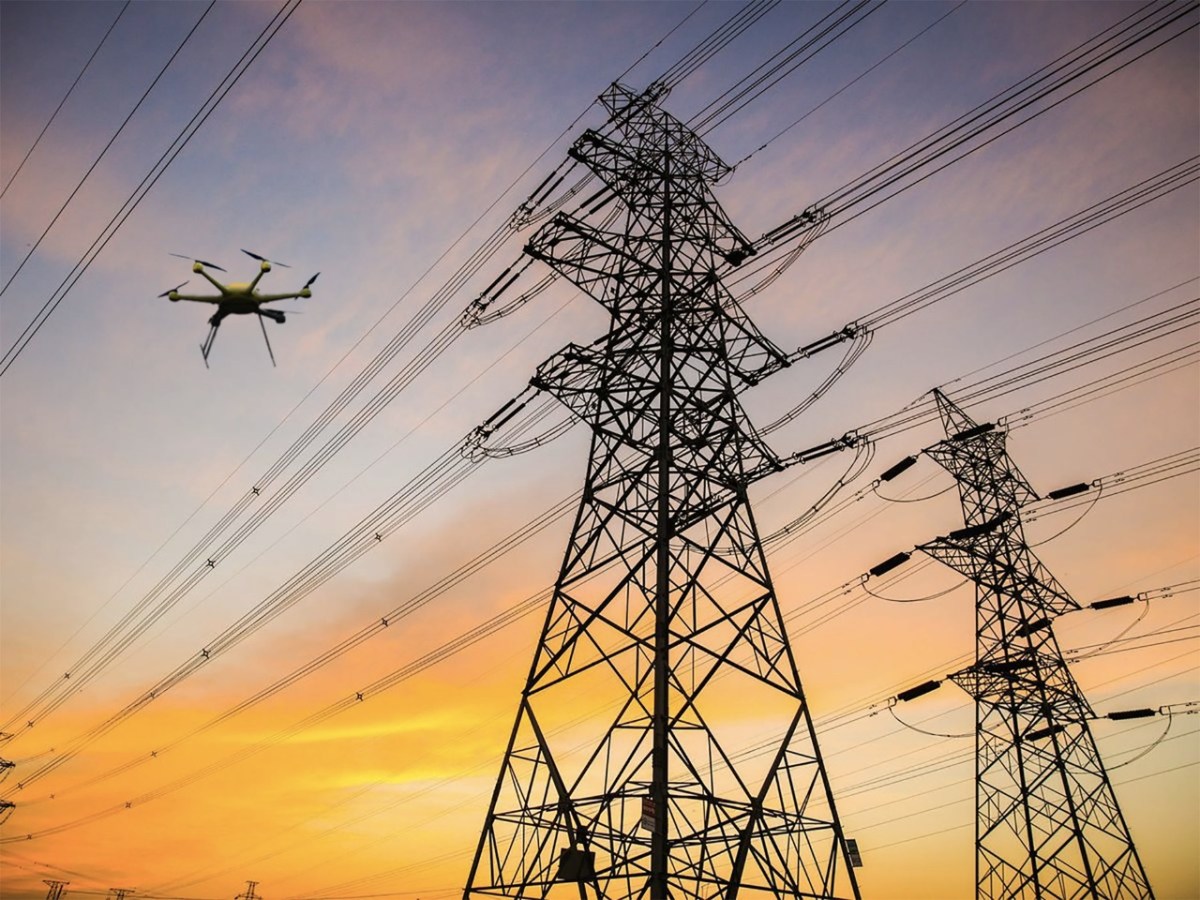Telefónica Tech has developed a predictive maintenance solution for electricity grids using drones with the aim of ensuring their reliability and guaranteeing their proper functioning. Its implementation will increase the safety of companies, improve the quality of the process and optimise costs compared to traditional methods.
This innovative proposal will be among the solutions that Telefónica Tech will present during the Mobile World Congress (MWC), to be held in Barcelona between 28 February and 3 March. The use of drones for predictive maintenance will be the focus of the session that will take place in the Agora at the Telefónica stand on Tuesday 1 March.
The drone used for the inspection of medium and high voltage networks (VTOL, which combine fixed wing with propellers and whose take-offs and landings are performed vertically) has an optical camera, a thermal camera, a LiDAR (remote sensing using laser light) and a gas sensor. The aircraft weighs only 5.5 kilograms, reaches a maximum speed of 100 kilometres per hour and has a range of up to five hours.
The information captured by the sensors is transmitted via 5G for processing with pre-trained artificial intelligence algorithms, which combine this data with historical and other external sources to assess which elements require maintenance. If anomalies are detected, the system is able to generate early alerts that indicate the need for more detailed analysis or to establish a new flight for more specific captures.
The solution also has a flight management platform where the drone’s functions and movements are controlled, flight missions are planned, annotations are made on the map based on the data collected by the aircraft and video with telemetry information is collected.
Andrés Escribano, director of New Business and Industry 4.0 at Telefónica Tech, said: “We are very proud to continue innovating and accompanying companies in their digital development. The application of drones in the business world presents numerous sectorial use cases that will be expanded and perfected with the massive deployment of 5G. The incorporation of drones in maintenance tasks will allow companies to increase their occupational safety and anticipate possible failures or incidents that without this predictive analysis could end in service outages with their corresponding social and economic impact”.
Main benefits
Predictive maintenance of electrical networks with drones has the ability to detect corrosion of insulators and check the temperature of the network in order to identify excessive hot spots that could cause a future failure.
The mapping mapped by the drone flight allows the company to establish safety corridors to prevent fires and trees falling on the towers. In addition, the solution is designed to be able to identify SF6 leaks (a non-toxic gas used in high-voltage electrical equipment) that have a high environmental impact, as well as bird nests and weeds on the towers or cables that could cause power outages.
Telefónica Tech’s solution has a direct impact on the prevention of occupational hazards by preventing workers from working at heights or near voltage, and improves the quality of work by providing high-precision images that can be processed in a safe environment. It also optimises operational costs and improves operations by avoiding the use of helicopters for these functions, avoiding the need for operators to travel to the area for routine tasks and allowing post-processing from the office.
For more information: Telefónica at MWC 2022
